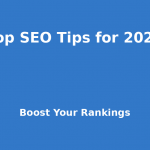Positive Aspects of Google Ads: A Comprehensive GuidePositive
|
Getting your Trinity Audio player ready...
|
Google Ads is one of the most powerful online advertising platforms available today. This article explores the positive aspects of Google Ads, how it works, its costs, the benefits it offers, and a comparison with Facebook Ads to help you make informed decisions for your digital marketing strategy.
How Google Ads Works
Google Ads operates on a pay-per-click (PPC) model, allowing businesses to bid on keywords related to their products or services. When users search for these keywords on Google, ads appear at the top or bottom of the search results. Here’s a step-by-step breakdown of how Google Ads works:
- Keyword Research: Identify the keywords relevant to your business.
- Campaign Creation: Set up your ad campaign, specifying your target audience, budget, and bid amount.
- Ad Creation: Design compelling ads that attract clicks and conversions.
- Bidding: Compete with other advertisers for ad placement by setting a maximum bid per click.
- Ad Auction: Google’s algorithm considers bid amount, ad quality, and relevance to determine ad placement.
- Performance Monitoring: Use Google Ads’ analytics tools to track and optimize your campaign’s performance.
Costs of Google Ads
The cost of Google Ads varies based on several factors, including keyword competition, industry, and geographic location. Here’s a breakdown of the costs involved:
- Cost-Per-Click (CPC): The amount you pay each time someone clicks on your ad. CPC can range from a few cents to several dollars.
- Daily Budget: The maximum amount you’re willing to spend per day on your campaign.
- Quality Score: A higher quality score can lower your CPC. It’s determined by the relevance and quality of your ads and landing pages.
Benefits of Google Ads
1. Targeted Advertising
Google Ads allows precise targeting based on keywords, demographics, location, device, and more. This ensures your ads reach the most relevant audience, increasing the likelihood of conversions.
2. Measurable Results
With Google Ads, you can track every aspect of your campaign’s performance, including clicks, impressions, conversion rates, and return on investment (ROI). This data-driven approach enables continuous optimization and better decision-making.
3. Cost Control
Google Ads offers flexible budgeting options. You can set daily or monthly budgets and adjust them at any time, ensuring you never overspend. The ability to pause or stop campaigns also provides financial control.
4. Quick Results
Unlike organic search engine optimization (SEO), which can take months to show results, Google Ads can generate traffic and leads almost immediately after the campaign is launched.
5. Brand Awareness
Even if users don’t click on your ads, appearing at the top of search results enhances brand visibility and credibility, leading to increased brand awareness over time.
Google Ads vs. Facebook Ads: A Comparison
While both Google Ads and Facebook Ads are powerful tools, they have distinct features and benefits. Here’s a comparison to help you decide which platform suits your needs:
1. Audience Targeting
- Google Ads: Targets users based on their search queries and intent, making it ideal for capturing demand.
- Facebook Ads: Targets users based on their interests, behaviors, and demographics, allowing for highly specific audience targeting.
2. Ad Formats
- Google Ads: Primarily search ads, but also offers display ads, video ads (YouTube), and shopping ads.
- Facebook Ads: Offers various ad formats, including image ads, video ads, carousel ads, and sponsored posts.
3. Cost
- Google Ads: Generally has a higher CPC due to competitive bidding on high-intent keywords.
- Facebook Ads: Often has a lower CPC, making it cost-effective for brand awareness and engagement campaigns.
4. User Intent
- Google Ads: Captures users actively searching for specific products or services, resulting in higher conversion rates.
- Facebook Ads: Engages users who may not be actively searching but are interested based on their profile and behavior.
5. Analytics and Reporting
- Google Ads: Provides detailed insights into search behavior and conversion tracking.
- Facebook Ads: Offers robust audience insights and engagement metrics, useful for understanding user behavior and preferences.
Google Ads offers numerous benefits, including targeted advertising, measurable results, cost control, quick outcomes, and enhanced brand awareness. By understanding how it works, the costs involved, and comparing it with Facebook Ads, businesses can leverage the strengths of each platform to achieve their marketing goals. Whether you’re aiming for immediate traffic or long-term brand engagement, integrating both Google Ads and Facebook Ads into your strategy can maximize your online advertising success.

 Previous Post
Previous Post Next Post
Next Post